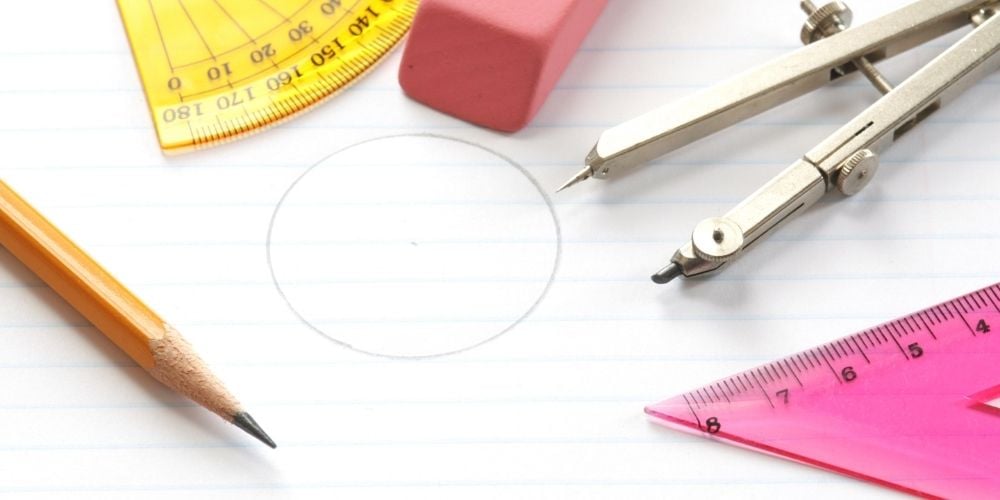Contents
- What are the benefits of maths games?
- What are the best free maths games?
- What are the best mental maths games?
- How to make your own maths board game?
Finding a helpful maths game can be challenging, as there’s so much out there! Game-based learning can be the make or break between engaged and demotivated students. In this article we outline what maths games and why they are useful, and provide you with tonnes of free options to use in your tutor sessions. Press play!
What are the benefits of maths games?
Maths is one of the hardest subjects to teach. Children sometimes call themselves either a ‘maths person’ or not, because of the challenges they come across in this incredibly useful and important subject.
And why’s that? Well maths is cumulative, which means that you need a huge amount of foundational knowledge before you can advance to the next stage.
Maths involves using plenty of multi-step processes to solve problems. Being able to master it takes more practice than other subjects. Having to repeat a process over and over again can quickly bore some children and this may make them become impatient and frustrated.
Take algebra for example. Without a good foundational knowledge of addition and mental maths, algebra will be all the more challenging for most people. How are you able to work out which order to complete an algebraic equation without first getting the individual additions or multiplications 100% correct?
If maths is difficult to learn, it’s even more difficult to teach! And that’s where maths games come in. Maths games are educational activities that encourage children to develop their Maths and arithmetic skills. Most importantly, using maths games should reinforce lesson content to maximise their educational value.
Once basic concepts are mastered (for example addition or multiplication), you can then bring maths games into your sessions to make practice more fun, as well as to make learning more challenging.
At GoStudent, we know that learning is best done little and often for long term success. This involves regular teaching, reteaching and retrieval practice.
Maths games can excel retrieval practice tenfold, as they encourage students to quickly recall recent learning and apply them to a range of iterative problems. Coupled with an outcome (like a goal or a win), maths games are instantly motivating and fun for students.
Maths games for children create an environment where practising is fun rather than boring or repetitive. That means you won’t need to motivate children in the same way that you would for other exercises, and they’ll channel their excitement into something productive!
Let’s look a little deeper at how game-based learning advantages all students.
Why are maths games so good for kids?
Think of the last time you played a game, what were you feeling? Odds are you were excited, surrounded by family and friends and totally engaged in hopes of ultimate victory! One model of project-based learning is game-based learning. This is a type of gameplay that has defined learning outcomes.
Generally game-based learning is designed to balance subject matter with game play and for the player to be able to relate this to the real world. Educators are always looking for new ways to engage students in learning, so why not use the power of gameplay to achieve learning goals?
In a game-based classroom or session, students are given real life experiences where they can try out different scenarios, look at different strategies for solving a problem and test them out!
Learners are actively engaged in making decisions and can see the possible consequences, but can also move at their own pace (and this is even more true in a one-to-one tutor session!).
There are lots of benefits of using the problem-based learning model. But before you press pay, be careful to know the difference between gamification and game-based learning in your classroom.
What’s the difference between gamification and game-based learning?
If you are using gamification in your classroom, you are using gamified instructional strategies. These might include:
- Creating leaderboards
- Designing avatars
- Assigning colours
- Offering power-ups
- Using a points system
- Offering badges or rewards
Game-based learning is different in that it integrates games into the learning process and this helps students to better retain their learning. Websites like Kahoot encourage a game-based learning approach that can be easily incorporated into your online lessons.
As you are looking for games to introduce to your students, you want to be looking for games with challenges or levels, an engaging format, rewards for achievements and of course, consequences for choices!
You should also ensure that the games you choose are supporting the traditional problem-based learning cycle, where students are looking at the situation, analysing the problem, testing their thinking, and presenting their findings.
Overall, the game is meant to be a part of the learning process.
Now that you know the basics of game-based learning, how do you know if it's effective for your students? Are maths games for you?
Do you have students with specific educational needs or low motivation due to learning differences like dyscalculia or the child skipping class? Then game-based learning can be a valuable part of your tutor toolkit.
Are you ready to play?
What are the best free maths games?
So where do you start with maths games? Let’s get into it!
101 and Out
This fast-paced and competitive fun maths game is perfect for the beginning or end of a lesson. The goal is to score as close to 101 as possible without going over.
You and your student will both need a couple of dice, and you can take it in turns to roll a go each. Each time you could choose strategies to count the number at face value or multiply it by 10. For example, students who roll a five can keep that number or turn it into 50. It’ll quickly turn into a race!
Simon Says: Geometry
A great maths game for younger students which helps develop a command of basic geometric shape knowledge, this game combines maths with movement.
As in Simon Says, all your commands should require students to illustrate angles and shapes by moving their arms. For example, ask them to make angles of varying degrees as well as parallel and perpendicular lines. Continuously speed up your commands to check if they are listening in your session!
Math Goodies
Math Goodies has tonnes of free maths games to support your online sessions. This website appeals to a range of learners because of the puzzles, articles and word problems on offer, all separated by age group so you don’t have to work it out.
We love all the sections for older teens, divided into categories like simultaneous equations, BODMAS and integers. There are creative narratives behind some of the maths problems to make things a little more interesting than typical textbook questions.
War
At GoStudent we are a big fan of card games. Easy, visual and clear, as well as fully transportable, a card game is the perfect accompaniment to any learning environment. War is the perfect fun maths card game.
To start, pair students together and give them each a deck of cards. Then, assign the following values:
- Ace = 1
- Two to 10 = Face value
- Jack = 11
- Queen = 12
- King = 13
You can differentiate the game based on the age of your students. For example, younger students can play two cards, subtracting the lower number from the higher. Older students (or those who need a challenge) can multiply the numbers, designating a certain suit as having negative integers. Whoever has the highest hand wins all four cards!
You can check out the full instructions here.
Prodigy
Prodigy is a US-focused free maths game which acts as an ideal platform to engage your students as you reinforce lesson content. It borrows elements from role-playing games (RPGs) such as Pokemon, as players compete in maths duels against in-game characters. To win, they must answer sets of questions.
As a tutor you can even customise questions. It’s highly linked to your excellent tutoring strategies. The game uses adaptive learning and differentiated instruction principles to adjust content, addressing each student’s problem areas.
Even though it’s US-focused, maths is universal! It could help to reinforce maths skills for UK students too. This could even help with challenging assessments like the 11+ later down the line.
What are the best mental maths games?
Mental maths is incredibly important for good cumulative maths habits. Remember learning your times tables in school? Or even just practising anything at great length like a sport? These are small, often daily habits that have resulted in broader educational benefits.
- Increased focus and concentration
- Self-confidence increases
- Improved cognitive ability to think and reason
So what mental maths games can you bring into the online classroom?
Stand Up, Sit Down
In need of another physical, but mental maths game to ensure your tutor sessions start energetically?
The principle of the game is straightforward: You pick a number, and students must stand if the answer to an equation you read aloud matches that number. If it isn’t, they remain seated in a circle. You can modify requirements for standing as needed. For example, you can tell students to stand if the answer is:
- Greater than 5
- An odd number
- A multiple of four
Pizza Fraction Game
This maths game is ideal for making fractions less intimidating and more fun. This game can be played with real pizza or laminated card pizza slices which you can hold up over Zoom. Use a circular template and read out a fraction. Your students will have to use the pizza slices and fill the circle with the number of slices equivalent to the fraction.
Maths Facts Bingo
This could not be simpler.
Maths Facts Bingo is a twist on traditional Bingo designed to reinforce basic arithmetic skills. In this game, each player has a 4x4 card with a series of numbers. You start by reading a series of maths problems (either addition and subtraction for younger children or multiplication and division for older).
Players must solve the problem and mark a space on their card (which you can source online or create yourself) corresponding to the answer. You could get them to do this in person, or virtually using Jamboard so you can both share the same online space.
Once a player completes a row or column and claims ‘bingo!’, the caller checks the maths to make sure their answers are correct. If so, they are declared the winner. If not, incorrect answers are removed from the card and play continues until a player completes a row or column of correct answers. So there’s always scope to keep going.
The goal in mental maths is not the solution, it’s about building the muscles of problem-solving to make the brain stronger (we call this sequential reasoning). Encourage your students that it’s not about a quick fix (we have calculators for that!), we want the effort. Effort = long-term improvement in all areas of life.
In fact, it actually stimulates both hemispheres (both sides) of the brain at the same time. Magic!
We promise you that mental maths practice is one of the best ways to improve all around brain function. When students’ cognitive load is maximised, they can learn and retain so much more.
How to make your own maths game?
As a tutor, you’ll want to set your students fun assignments that they can try away from the lesson to show you next time. This will reinforce learning and encourage independent learning.
We have the perfect DIY maths game that you can share with your students and their families! It combines our values of bringing art and fun into the online classroom, as well as sequenced, strategic thinking.
They will need:
- Coloured paper
- Die
- Felt tip pens
- Something to use as game pieces (like small toy cars or dinosaurs)
Step one: Create a blank board game of your own design, for example a snake, a ladder, a building or a winding maze, and in each box or space you create a maths problem.
Step two: As far as adding in equations go it depends on the desired challenge level, but you might want to start students off, but then they can go further by recalling recent skills in your lessons like multiplication, factorising or algebra.
Step three: Don’t forget to get them to add different colours and decorate the board to make everything more visually appealing.
Step four: Once that’s all done, it’s time to start playing. Roll the die to decide who gets to start (highest number first!) and then roll again to find out which sum or equation you’ll be answering first.
Step five: Take turns to answer equations. If someone gets it right, they’ll move the number of spaces of the correct answer, if wrong, they can’t move at all. Play until someone gets to the finish line!
For further tips. the answers should be low, ideally between 1-10 so that you don’t fly off the board later on. Remember to add a start and a finish line!
If you don’t want to set it as a homework task, you could create the board yourself on A4 and then either scan or take a high quality photo to share with students.
We’re here to support you in making numbers fun for everyone, and reducing maths anxiety in your students.









